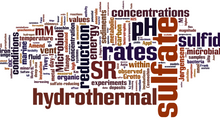Hot off the press: Geology and land use shape nitrogen and sulfur cycling groundwater microbial comm
- kianalfrank
- Jun 21, 2023
- 2 min read
Lead by the Herculean efforts of Dr. Sheree Watson as part of the ʻIke Wai, we have recently published an new paper in ISME Communications, shedding light on how geology and land use influence these vital ecosystems and offering valuable insights into the sustainability of water resources in Hawai'i. Dr. Sheree Watson's research is a testament to the power of scientific exploration and the critical role of microbial communities in our planet's hidden realms. This paper, not only advances our understanding of groundwater ecosystems but also highlights their potential for bioremediation—a beacon of hope for the sustainability of water resources in Hawai'i.

Resource-constrained island populations have thrived in Hawai'i for centuries, but their way of life faces new and aggressive challenges. Among these challenges is the security and sustainability of water resources, a fundamental necessity for survival. Dr. Watson's research focuses on characterizing the microbial communities in groundwater ecosystems, providing a powerful tool to understand the impact of human activities and land management on these complex aquifers.

The Study's Scope
Over a span of two years, our team collected samples from 19 wells scattered across the Hualālai watershed in Kona, Hawai'i. These samples were subjected to a comprehensive analysis that included geochemistry and microbial community profiling using 16S rRNA amplicon sequencing. The goal was to uncover how geology and land management practices influence the geochemistry, microbial diversity, and metabolic functions of these critical groundwater ecosystems.
Revealing Key Insights

The research yielded fascinating findings. Geochemical analysis revealed elevated levels of sulfate in the northwest volcanic rift zone, while high nitrogen content correlated with the density of on-site sewage disposal systems (OSDS). A total of 12,973 Amplicon Sequence Variants (ASV) were identified in 220 samples, with 865 ASVs classified as putative nitrogen and sulfur cyclers. Notably, these cyclers were dominated by a putative sulfur oxidizer coupled to complete denitrification known as Acinetobacter. Impressively, Acinetobacter was significantly enriched, up to four times more, in samples grouped by geochemistry.
The Significance of Acinetobacter
The presence of Acinetobacter in these groundwater ecosystems holds profound implications. This microbe hints at the potential for bioremediation of volcanic groundwater. It possesses the capability for microbial-driven coupled sulfur oxidation and denitrification, offering an essential ecosystem service. This service is of immense importance to island populations that rely on groundwater aquifers for their survival.
Recent Posts
See AllExciting times are ahead as we join forces with Dr. Creighton Litton and the incredible team that put together a successful NSF- IRES...





















Comentarios